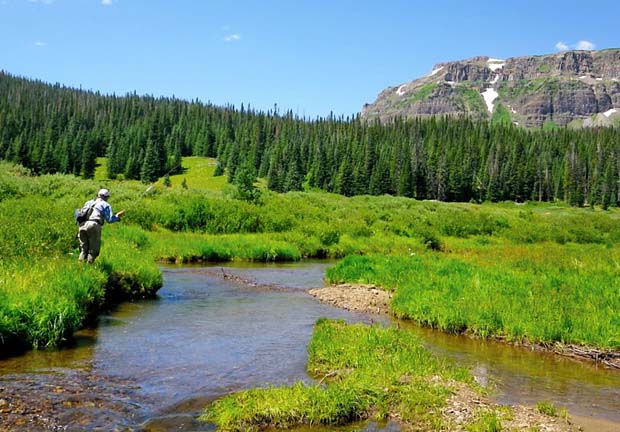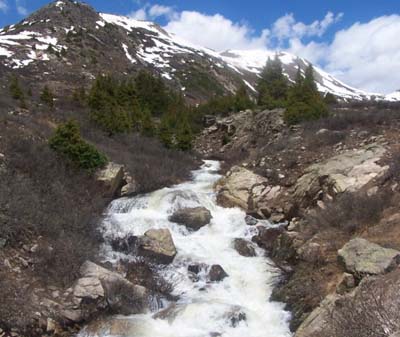Groundbreaking State Law Tested in Colorado Headwaters Stream
by Sandra Postel of National Geographic’s Freshwater Initiative in Water Currents on September 21, 2015
Sandra Postel and Todd Reeve
[dropcap]T[/dropcap]he infamous use-it-or lose-it rule is arguably the biggest barrier to water conservation and river-flow restoration in the western United States
It basically says that if anyone holding water rights does not put them to full use, the unused portion can be taken away and allocated to serve the needs of another water user. Historically, using a water right to keep a river flowing for fish or the health of the ecosystem was not considered a “beneficial use” of water, and therefore could result in losing that water right.
Perversely, the use-it-or-lose-it principle gives water rights holders an incentive to waste water so that they don’t risk losing any of their increasingly valuable water rights.
Bit by bit, however, new state laws and innovative projects are chipping away at this outdated rule, and keeping rivers flowing for fish, wildlife and local communities. A groundbreaking 2013 Colorado law provides new flexibility that allows water rights owners to allocate water to a river during times of critical low flow.
In the Colorado River headwaters, just outside of Rocky Mountain National Park, Willow Creek is providing a test case for the new law.
There, Witt Caruthers, a ranch owner with rights to divert a portion of Willow Creek’s water, decided to develop a plan allowing him to leave water in the creek for up to five years during a 10-year period—without the threat of the “use it or lose it” provision.
The water for Caruthers’ ranch, which is delivered through two irrigation ditches not far from where Willow Creek meets the Colorado River, irrigates 70 acres (28.3 hectares) of pasture. Typically, the diversions begin in May and continue through late summer. By that time, rivers and streams that rely on snow melt are running low – and after diverters take their share of water, many streams are at risk of running completely dry. Such was the case with Willow Creek.
For Caruthers the conservation project offered a chance to do something positive for Willow Creek and to set a precedent for other rivers in the drought-stricken West.
“Colorado’s water system created an incentive to use our water even in times when it’s not absolutely necessary,” Caruthers told the Denver Post. “When you’re under that pressure to use it or lose it, you’re almost forced to abuse it. That’s to the detriment of all.”
Caruthers and his partners worked with the Denver-based Colorado Water Trust (CWT) to design the project. It essentially involves curtailing diversions from Willow Creek when flows drop dangerously low. Because there are no other diverters immediately downstream, the enhanced flows will benefit not only the lower half mile of Willow Creek, but also some 4.3 miles of the upper Colorado –including populations of brook and brown trout.
About:
Sandra Postel is director of the Global Water Policy Project and Freshwater Fellow of the National Geographic Society. Todd Reeve is CEO of the Bonneville Environmental Foundation. They are co-creators of Change the Course.
NOTE: Featured Image by Winter Hawk.com. Colorado: Near their headwaters, most of these streams run cold and clear, providing excellent habitat for native cutthroat trout.



